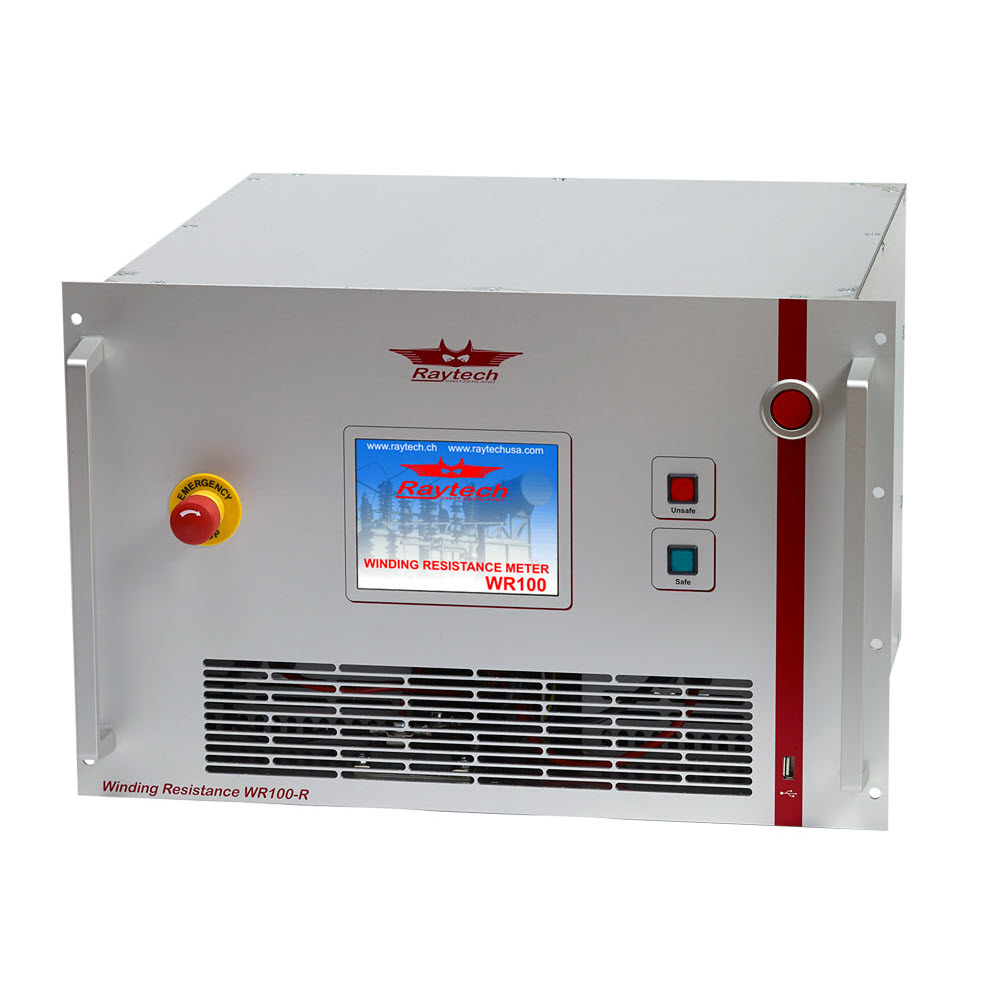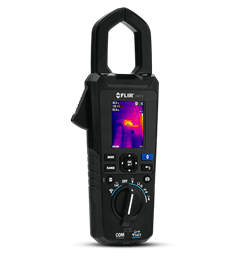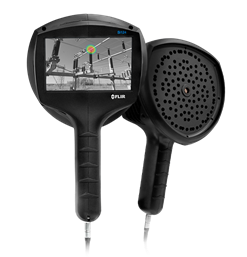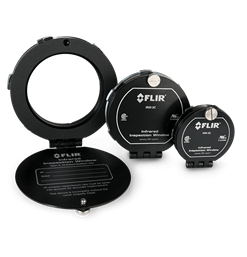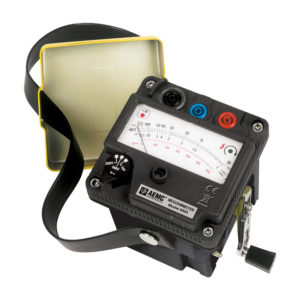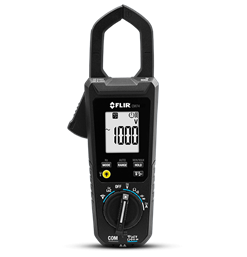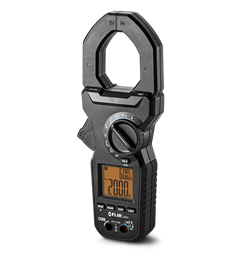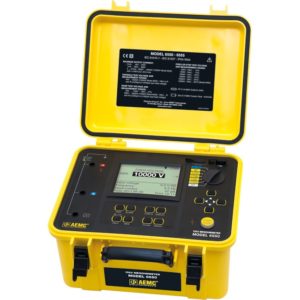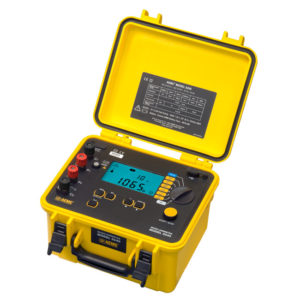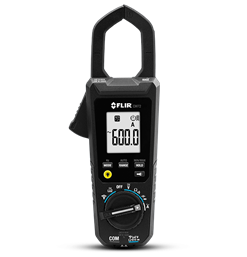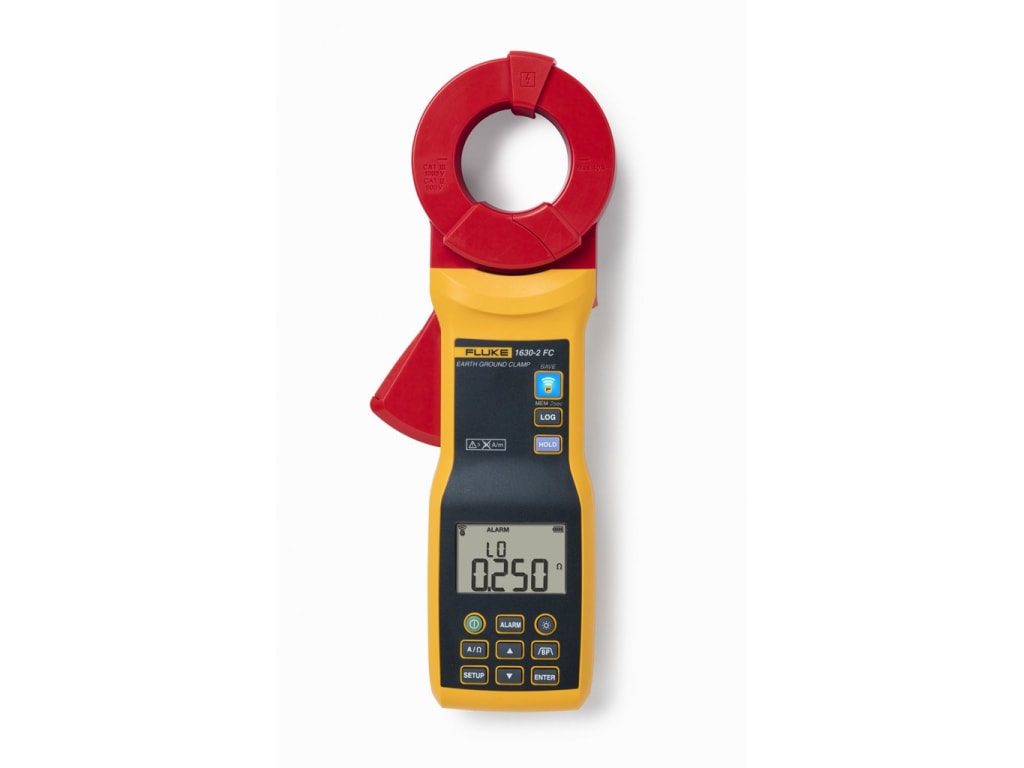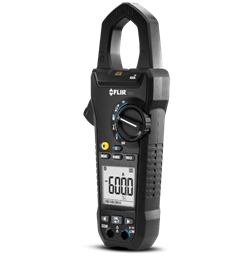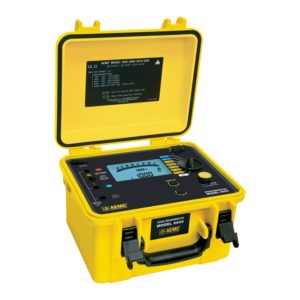Description
WR100-12R
WR100-12R: 100 Amp, 2 Channel Winding Resistance Meter with Demagnetization and Discharge
Raytech’s digital winding resistance meter WR100-12R is the winding resistance system with a most advanced demagnetizing circuit as a rack version.
It is designed for a high degree of accuracy for the measurement of very low resistance of any inductive load.
Unique Measuring Technique: This newly designed technique of measurement incorporates a high precision measurement circuit, a unique power source and the fastest discharge unit on the market.
Operation: The WR series of instruments apply a preset current level, selected by the user, from 0.025A to 100A. The results are reported on the easy-to-read color LCD display and can be stored.
Advanced Protection: Upon powering on, the system initializes itself with a self-calibrating, circuit checking sequence. If any problem is detected during initialization or operation, the operator will be notified immediately. The system constantly monitors the condition when turned on. The WR series has an extensive protection built into the circuitry. This is one of the many reasons we can extend our warranty to 5 years.
Features
- Pure, filtered DC power source for the highest accuracy readings
- Highest Accuracy and Precision of any high current test system
- Complete, automatic calibration system and system diagnostics
- Automatic measurements of resistance from 0.00 µΩ … 100 kΩ
- Demagnetizing Circuit (Advanced design)
- Microprocessor-based system with internal storage for over 10,000 test results
- Data exchange via USB-Key or USB / RS Connection
- Storage of test results while the test system is measuring
- Temperature channels with automatic resistance correction
- Automatic, high efficiency cooling system to dissipate internal heat
- Automatic shut off for over-temperature conditions
- Simple-to-operate color LCD touch screen with backlight
- Panel-mounted Emergency Stop Switch
- Fully automatic cooling curve analysis (option AHRT-01)
- Fastest discharge time on the market
- Standard USB 2.0 & RS-232 (serial) Interface
- 19″ rack-mounting casing
- 5-Year standard warranty
Accuracy
| Current Range | Measuring Range | Accuracy | Resolution |
| 30 – 100A | 0.00 µΩ … 1.7 Ω | ± 0.1% Rdg ± 0.05 µΩ | 5 Digits or 0.05 µΩ |
| 15 – 30A | 0.0 µΩ … 3.3 Ω | ± 0.1% Rdg ± 0.1 µΩ | 5 Digits or 0.1 µΩ |
| 8 – 15A | 0.0000 mΩ … 6.3 Ω | ± 0.1% Rdg ± 0.2 µΩ | 5 Digits or 0.2 µΩ |
| 3 – 8A | 0.0000 mΩ … 16.7 Ω | ± 0.1% Rdg ± 0.5 µΩ | 5 Digits or 0.5 µΩ |
| 1 – 3A | 0.000 mΩ … 47.2 Ω | ± 0.1% Rdg ± 1 µΩ | 5 Digits or 1 µΩ |
| 0.7 – 1A | 0.000 mΩ … 71.4 Ω | ± 0.1% Rdg ± 2 µΩ | 5 Digits or 2 µΩ |
| 0.3 – 0.7A | 0.000 mΩ … 167 Ω | ± 0.1% Rdg ± 5 µΩ | 5 Digits or 5 µΩ |
| 0.1 – 0.3A | 0.00 mΩ … 500 Ω | ± 0.1% Rdg ± 10 µΩ | 5 Digits or 10 µΩ |
| 25 – 100 mA | 0.00 mΩ … 2 kΩ | ± 0.1% Rdg ± 20 µΩ | 5 Digits or 20 µΩ |
| < 25 mA | 2 kΩ … 10 kΩ | ± 0.2% Rdg ± 200 mΩ | 5 Digits or 200 mΩ |
| < 25 mA | 10 kΩ … 100 kΩ | ± 0.8% Rdg ± 20 Ω | 4 Digits or 20 Ω |
| Resistance Range: | 0.00 µΩ to 100 kΩ |
| Inductance Range: | 0 to 1,500 Henry |
| Temperature: | Operating: -10ºC to 60°C (14ºF to 140ºF) Storage: -20°C to 70°C (-4ºF to 158ºF) |
See Instruction Manual for more Parameters. Specifications subject to improvement at any time.
Specifications
- Size: L: 490 mm (19.3″) W: 436 mm (17.2″) H: 310 mm (12.2″), Rack Unit: 7U
- Weight: 21.9 kg (48.3 lbs.)
- Input Power: 2 x 90 to 264 VAC (3 kW max.), 47…63 Hz, automatic ranging
- Output Voltage: 0 to 50V DC
- Test Current: User Selectable: 25 mA … 100 A
- Display: Color LCD with a backlight and a touch screen
- Front Panel: Sealed, anodized
- Interface: 4 USB 2.0 (3 host, 1 device) and 9 Pin RS-232 serial
- Memory Storage: Internally stores more than 10,000 test results
- Temperature: Operating: –10°C to 60°C (14ºF to 140ºF), Storage: –20°C to 70°C (-4ºF to 158ºF)
See Instruction Manual for more Parameters. Specifications subject to improvement at any time.
Firmware WR (v3.4.5.0)
Flyer WR100
Temperature Probe Flyer
Command Set WR-xx (v3.02)
Instruction Manual WR-xx (v3.03)
T-Base Pro (2.3.2)

